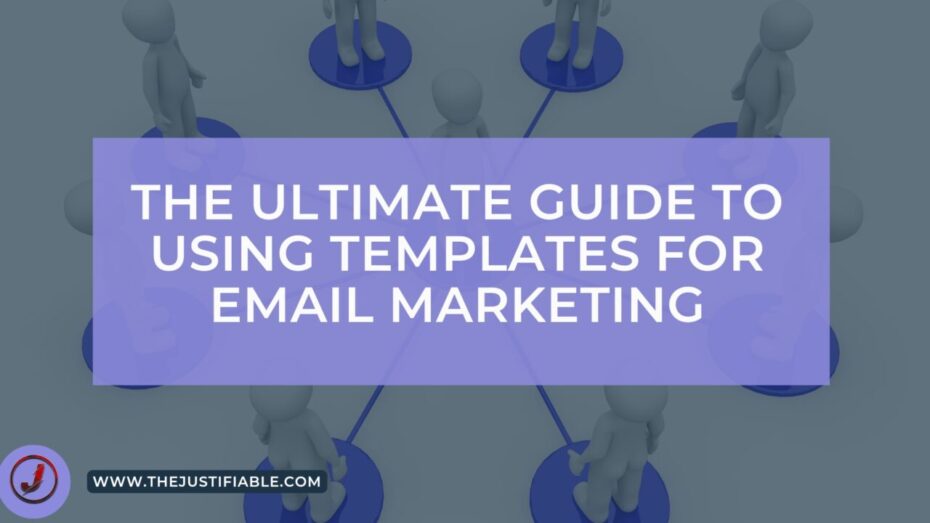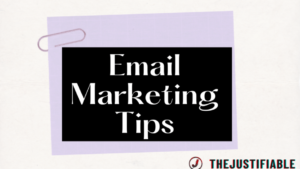Table of Contents
The ultimate guide to using templates for email marketing!
Email marketing is a crucial aspect of any business strategy. It helps businesses connect with their customers, increase engagement, and drive sales. However, creating an email from scratch can be time-consuming and challenging, especially for those without design experience.
That’s where email marketing templates come in. In this ultimate guide, we will explore everything you need to know about templates for email marketing and how they can benefit your business.
What are Email Marketing Templates?
Email marketing templates are pre-designed email layouts that businesses can use to create emails quickly and efficiently. These templates are usually designed by professional graphic designers and marketing experts to ensure they are visually appealing and optimized for conversions.
Templates can include pre-written copy, images, and buttons, allowing businesses to create emails quickly and easily.
Benefits of Using Email Marketing Templates
Using templates for email marketing has numerous benefits, including:
- Time-Saving: Creating an email from scratch can take hours or even days, depending on the complexity of the design. With email marketing templates, businesses can create professional-looking emails in minutes, saving time and effort.
- Consistency: Using email templates ensures consistency in design and messaging across all your email campaigns. This consistency helps build brand recognition and trust with your subscribers.
- Easy Customization: Most email templates are customizable, allowing businesses to add their branding, images, and messaging. Customization ensures that the email looks and feels like the business, increasing brand awareness and engagement.
- Higher Conversions: Email templates are designed by experts to be visually appealing and optimized for conversions. This optimization ensures that the email is engaging, easy to read, and includes clear calls-to-action, increasing the chances of conversions.
- Accessibility: Email templates are accessible to businesses of all sizes and budgets, making them an affordable marketing solution for businesses.
Types of Email Marketing Templates
There are various types of email marketing templates that businesses can use, including:
- Newsletter Templates: Newsletter templates are designed for regular communication with subscribers. These templates usually include the latest news, updates, and promotions from the business.
- Event Invitation Templates: Event invitation templates are designed for businesses hosting events or webinars. These templates usually include event details, RSVP buttons, and directions to the venue.
- Product Launch Templates: Product launch templates are designed for businesses launching new products. These templates usually include product images, features, and a call-to-action to encourage subscribers to purchase.
- Welcome Email Templates: Welcome email templates are designed for businesses to welcome new subscribers. These templates usually include a personalized message, company information, and a call-to-action to encourage subscribers to engage with the business.
- Abandoned Cart Templates: Abandoned cart templates are designed for businesses to re-engage with subscribers who have left items in their cart without purchasing. These templates usually include a reminder of the items left in the cart and a call-to-action to encourage subscribers to complete the purchase.
How to Choose the Right Email Marketing Template
Choosing the right email marketing template can make a significant difference in the success of your email campaign. Here are some factors to consider when selecting a template:
- Purpose: Consider the purpose of your email campaign and choose a template that aligns with your goals. For example, if you’re hosting an event, choose an event invitation template.
- Branding: Choose a template that aligns with your branding, including color schemes, fonts, and imagery. Consistent branding across all your emails builds brand recognition and trust with your subscribers.
- Customizability: Choose a template that is customizable to ensure that the email looks and feels like the business. Customization options should include the ability to add your branding, images, and messaging.
Where to Find Email Marketing Templates
There are various places to find email marketing templates, including:
Email Service Providers: Most email service providers, such as Mailchimp and Getresponse, offer a wide range of email marketing templates for businesses to choose from. These templates are usually customizable, allowing businesses to add their branding, images, and messaging.
Template Marketplaces: There are numerous marketplaces, such as ThemeForest and Creative Market, that offer email marketing templates. These templates are usually designed by professional graphic designers and marketing experts and are available for purchase.
Custom Template Design: For businesses with specific branding or messaging requirements, custom template design may be the best option. Custom template design allows businesses to create a template that aligns with their branding and messaging.
Best Practices for Using Email Marketing Templates
While using email marketing templates can save time and effort, it’s essential to follow best practices to ensure the success of your email campaign. Here are some best practices to consider when using email marketing templates:
- Customize the Template: Customizing the template ensures that the email looks and feels like the business and aligns with your branding and messaging.
- Use Engaging Copy: The copy should be engaging and encourage subscribers to take action. Use clear and concise language and include a call-to-action to encourage conversions.
- Test the Email: Before sending the email, test it on various devices and email clients to ensure it appears correctly. Testing ensures that the email is optimized for all subscribers.
- Monitor the Results: After sending the email, monitor the results to determine its success. Use metrics such as open rate, click-through rate, and conversions to determine the effectiveness of the email campaign.
- A/B Testing: Consider using A/B testing to determine the most effective template design, copy, and call-to-action. A/B testing allows businesses to test different variations of the email and determine the most effective combination.






